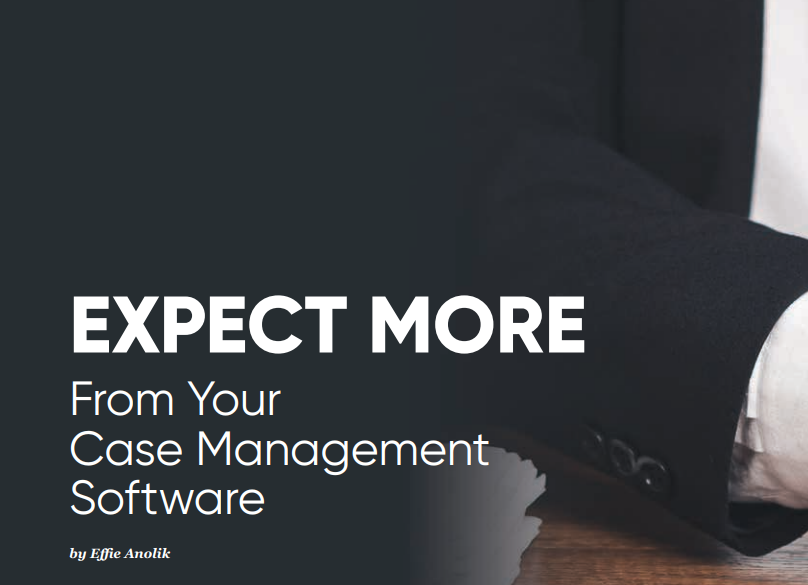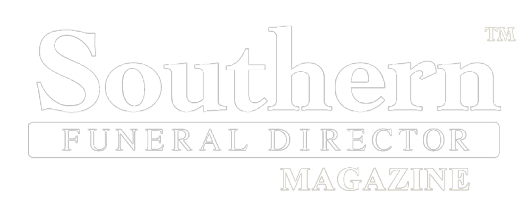(404) 312-6640
EXPECT MORE From Your Case Management Software
When you run a funeral home, maximizing your time is maximizing your earning potential. The less time you spend entering information into your many systems, the more time you can spend taking care of your families and planning services that create a lasting impact. While you may already be using some form of case management, advancements in technology have revolutionized these systems, making now the perfect time to reevaluate your options.
The first case management systems were built by Funeral Directors looking for a central place to store vital information. Most were stored on an external server, kept in the funeral home, and difficult to maintain. In most cases, Funeral Directors would write vital information down on paper while with a family and later enter it into their case management system for long-term storage. That’s where the features stopped. Documents were still created by hand, merchandise was selected in selection rooms, and tasks were marked off within the paper file.
Since then, technological advancements have made it possible for consumers to order their groceries from their phones, call an Uber to the airport, and ask AI what car they should buy next. There are many ways software can work for you and help you spend less time writing vital information down, and more time on what you love: planning meaningful services for the communities you serve.
If you think about the planning process, your software should help you from first call to Aftercare. It should replace a number of your systems and be customized to your needs. In 2024, your software can automatically generate documents, allow families to plan online, digitize your whiteboard, connect to your bookkeeping system, and even help write obituaries using AI. These systems can be accessed from your funeral home computer, your phone on the road, or an iPad. Software design and speed have also come a long way, making it possible for every director to become comfortable using it.
Not all software works the same, and finding one that suits your business needs can be challenging. Everyone’s list of needs may look different. You may arrange services from the family’s homes, you may have already replaced your selection room with a virtual one, or you may offer an online planning solution to your community.
If your current software isn’t making your life easier—or if you’re not using any software at all—it’s not too late. The good news is that there are a number of software solutions out there to fit your needs.
THE BENEFITS OF MODERN CASE MANAGEMENT
With the right software, your team can see what’s happening with every case from anywhere. Instead of texting the group chat to confirm they ordered the right casket or taking a photo of your whiteboard before heading home for the night, your team can open your case management system to confirm these details. Similar to working with a calling service when you’re at a funeral, case management can give you peace of mind and introduce new offerings to the families you serve.
Here are some key benefits of modern case management:
ENTER INFORMATION ONCE AND ONLY ONCE. Then generate your documents, obituary, death notices, and aftercare. You’re likely already using your computer to generate a death certificate and publish an obituary on your website.
ACCESSED FROM ANYWHERE. With a modern system that is secure and cloud-based, you can safely access your data from any device with an internet connection. Automatic backups ensure data is never lost or damaged.
GIVE FAMILIES A CONSISTENT EXPERIENCE WHEN THEY MEET WITH EVERY DIRECTOR. Many systems are designed to be shown to a family during the arrangement meeting. This is a great way to confirm all the information is correct while showing them the same options as everyone else. Digital tools can guide Funeral Directors through vital information and service selections, allowing more time for meaningful discussions.
VIRTUAL SELECTION ROOM. Guide families through all of your merchandise selections without referencing a number of different physical catalogs or websites. Many systems allow you to display your selections cleanly and consistently.
ENHANCED TEAM COLLABORATION AND VISIBILITY TO GIVE YOU PEACE OF MIND. Look for a system that can digitize your whiteboard and task lists for real-time tracking from anywhere. Your team can see who completed a specific task without reaching out to them directly to ask.
OPTIMIZE YOUR WORKFLOW WITH CUSTOM SOFTWARE. No two funeral homes are the same and your software should reflect that. If you collect only certain vital information in a specific order, those should be the only fields you see with personalized software.
UNDERSTAND HOW FAMILIES ARE FINDING YOU WITH DIGITAL TOUCHPOINTS. There are many ways a family can find you. Maybe you’ve buried their parents, maybe they’ve attended a friend’s service, clicked on a Google ad, or found you on Facebook. With digital register books, data migration from your previous systems, and connections with your marketing efforts, your case management can be the answer to how a new family learned of your funeral home.
AFTERCARE AND CUSTOMER REVIEWS ARE JUST AS IMPORTANT AS ARRANGING THE PERFECT SERVICE. With follow-up emailing built right into many platforms, you don’t have to think about asking for important reviews to share with your future families. In 2024, many families are finding funeral providers through online search and it’s imperative that you’re asking for Google reviews.
FAMILY COLLABORATION ALLOWS FAMILIES TO SHARE VITAL INFORMATION, SELECT SERVICES, AND PAYMENT DETAILS BEFORE MEETING YOU IN-PERSON. Digital tools enable families to share information, select services, and provide payment details before meeting in person. This allows you to spend more time discussing what matters most during in-person meetings.
QUALITY CUSTOMER SUPPORT. Reliable customer support is crucial. You’re not a number and you shouldn’t be treated that way. Be sure to ask for references and reviews. Pick someone you would like to work with rather than the number of years the company has been around.
LEGISLATION COMPLIANCE PARTNER. Your software can help make sure you stay compliant with all the changing legislation at the state and federal levels. For example: online pricing with the FTC and body tracking requirements in your state.
CHOOSING THE RIGHT SYSTEM. Selecting the ideal management software involves more than just comparing features—it’s about finding the best fit for your specific business needs. Is it important for you to be able to view all of your cases in one place? Is it important to offer an online planning solution for your out-of-town families? Maybe it’s most important to incorporate your tasks or include aftercare.
Start by identifying what’s important to you and your team. Evaluate the different solutions you’re already using, whether that’s case management, online forms, printed task lists, and your selection room. Decide if it’s important for a platform to be personalized to you or if you’re comfortable skipping the fields that come out of the box.
Most importantly, find a system that provides the quality of service you expect. You’re selecting a partner to help you grow as the generational tradition happens and as technology continues to advance.
Technology is advancing quickly and in the future, we see how families can plan pre-need and at-need online, how AI can help with ID verification, and automate repetitive tasks.






Comments